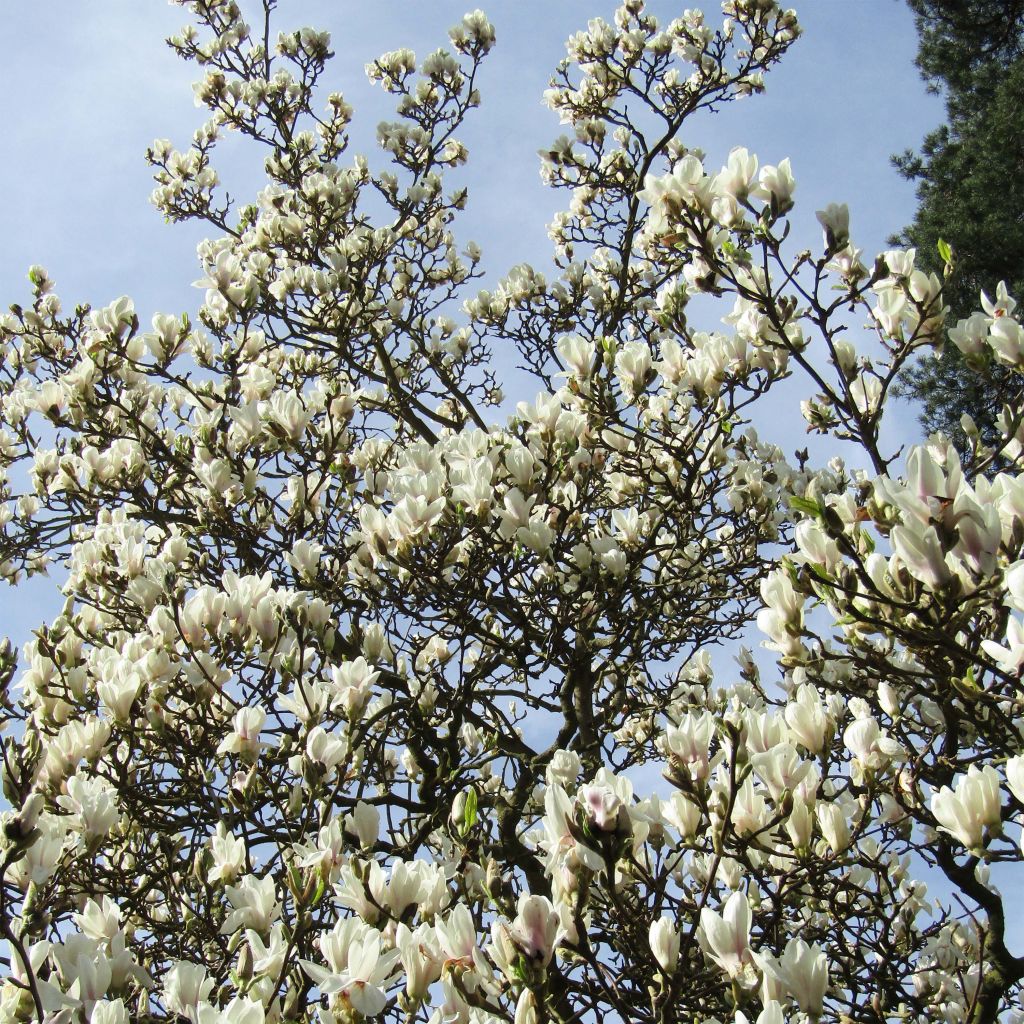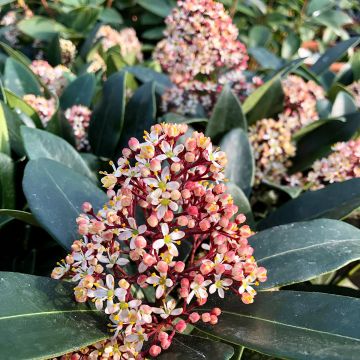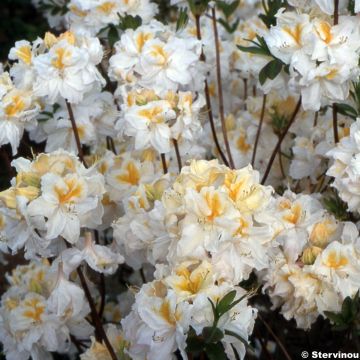

Magnolia soulangeana Alba Superba


Magnolia soulangeana Alba Superba


Magnolia soulangeana Alba Superba


Magnolia soulangeana Alba Superba
Magnolia soulangeana Alba Superba
Magnolia x soulangeana Alba Superba
Magnolia
This item cannot be shipped to the selected country
Delivery charge from €6.90
Delivery charge from €6.90
More information
Delivery charge from €6.90
Delivery charge from €6.90
More information
Schedule delivery date,
and select date in basket
This plant carries a 24 months recovery warranty
More information
We guarantee the quality of our plants for a full growing cycle, and will replace at our expense any plant that fails to recover under normal climatic and planting conditions.
From €7.90 for pickup delivery and €6.90 for home delivery
Express home delivery from €8.90.
From €7.90 for pickup delivery and €6.90 for home delivery
Express home delivery from €8.90.
Does this plant fit my garden?
Set up your Plantfit profile →
Description
The Magnolia (x) soulangeana or Soulange Magnolia Alba Superba is a fascinating small ornamental tree that beautifully celebrates the arrival of spring. This variety is distinguished by its large, almost white flowers, barely tinged with pink at the base, which bloom profusely on branches that are still devoid of leaves. Of medium size but with good vigour, 'Alba Superba' is impressive with its beautiful crown that expands like a cloud. In the garden, this perfectly hardy magnolia is one of the most adaptable to soil and climate, making it suitable for adoption in most areas.
This Soulange Magnolia, sometimes marketed under the name 'Amabilis' or 'Alba', belongs to the magnolia family. It is a French horticultural creation from the 19th century, resulting from the cross-breeding of the Magnolia denudata and the Magnolia liliflora, both native to Asia. With a rounded and spreading shape, taller than wide, it reaches a height of 6 to 8 metres (19.7 to 26.2 feet) at maturity, with a width of 4.50 metres (14.8 feet). Often presenting a bushy habit with beautiful, well-balanced branches, it can also grow with a single trunk. Its deciduous foliage consists of oval, dark green leaves, with a paler and finely villous underside, turning yellow-brown in autumn, and measuring 10 to 15 cm (3.9 to 5.9 inches) in length. From March to May, depending on the region, large, solitary and slightly fragrant flowers appear, shaped like cups or tulips, measuring 15 cm (5.9 inches) in all directions, with white flowers touched with pink at the base. These upright flowers bloom from buds protected by villous bracts, and are formed by 9 waxy and thick tepals (indistinguishable sepals and petals), opening widely around a brown-red stamen core. After flowering, brown fruits in the form of cylindrical cones appear, containing red seeds. The lifespan of the Soulange Magnolia can exceed a hundred years. It is one of the most planted magnolias and hybrids in parks and gardens throughout Europe.
This Soulange Magnolia Alba Superba, an ornamental tree par excellence, will make a sensation in both medium-sized gardens and large parks! Perfectly adapted to our climates, it develops enthusiastically in any good garden soil that is not too chalky. Be careful not to plant other vegetation within 1.50 metres (4.9 feet) of the trunk of the Magnolia, as its somewhat superficial roots do not tolerate competition well. A true star during flowering, it is most often used as a standalone tree in the middle of a lawn, near a bench, or at the entrance of the garden. The key is to choose a strategic location from where it can be admired from a window. It can also be associated with a mass of acid-loving shrubs (Rhododendrons, Camellias, Hydrangeas, Kalmia) for a Japanese-style garden.
Magnolias are ancient trees, with fossils dating back more than 20 million years. Their magnificent flowering is considered one of the most primitive: their flowers are, from an evolutionary point of view, close to the earliest existing flowers. The bark of magnolias has medicinal properties and is used in cosmetics. Their wood is considered precious.
A bit of history:
Its name, Magnolia, was given to it in 1703 by Charles Plumier, the botanist of King Louis XIV, paying homage to the physician-botanist Pierre Magnol (1638-1715), who was one of the directors of the Botanical Garden of Montpellier in the late 17th century. Its specific name, soulangeana, originates from Etienne Soulange-Bodin (1774-1846), a retired cavalry officer from Napoleon's army who dedicated himself to horticulture. In his Fromont castle, near Paris, he became passionate about magnolias and obtained this hybrid in 1829, which today originates from a magnificent lineage of cultivars!
Plant habit
Flowering
Foliage
Botanical data
Magnolia
x soulangeana
Alba Superba
Magnoliaceae
Magnolia
Cultivar or hybrid
Other Magnolia
View all →Planting and care
Magnolia x soulangeana Alba Superba thrives in sheltered locations with plenty of sun or partial shade. It requires moist to humid, well-drained, deep, neutral to acidic soil that is rich in humus. It can tolerate clayey soil as long as it is not waterlogged and can also handle some limestone in the soil, but not too much. However, it cannot survive in poor, dry soil or windy locations. The tree is highly hardy and can withstand temperatures as low as -20°C, but young plants need protection from frost in their first years. Late frosts and cold winds can damage the tree's flower buds and young leaves, affecting its ability to bloom.
You can plant Magnolia in spring or autumn, as long as there is no frost. Choose a sheltered spot away from cold winds and prepare a hole that is 80 cm (31.5 in) on each side and the same depth. Fill the hole with ericaceous soil, compost, and carefully place the tree in it to avoid breaking its fragile roots. Water the tree immediately with non-limestone water (rainwater) to help compact the soil around the roots. In the first year after planting, water the tree once a week. Add a layer of mulch or fertiliser in the spring.
Replacing the soil with grass cuttings, pine bark, leaf compost, and ericaceous soil is advisable if planting in limestone soil. Avoid choosing too large plants (1.50 m (4 ft 11 in) is a good size) for a better tree establishment. Staking may be necessary for larger trees and should be generously watered in the first few years. Magnolia cannot tolerate prolonged drought, so the soil should remain slightly moist (but not waterlogged) throughout the summer. Mulching the base of the tree will help retain moisture during the hot season, enrich the soil, and protect it from the cold in winter.
For the first few years, pruning after flowering can be done to shape the tree's silhouette. The growth of this tree is slow in the first years after planting, but it will be well-established after 4 to 5 years, and its growth rate will increase. Pruning will become unnecessary except for removing dead wood and rebalancing its habit. Transplanting should be avoided due to the tree's fragile roots. Because Magnolia's roots are delicate, it's best to avoid transplanting. Magnolias are ornamental trees that do well in polluted areas, and their roots won't damage building foundations. Parasites like scale insects, snails, and slugs can harm young plants and diseases like rot (in excessively wet soil), coral spot, and pestalotiopsis.
Planting period
Intended location
Care
Planting & care advice
-
, onOrder confirmed
Reply from on Promesse de fleurs
Spring-flowering shrubs
Haven't found what you were looking for?
Hardiness is the lowest winter temperature a plant can endure without suffering serious damage or even dying. However, hardiness is affected by location (a sheltered area, such as a patio), protection (winter cover) and soil type (hardiness is improved by well-drained soil).

Photo Sharing Terms & Conditions
In order to encourage gardeners to interact and share their experiences, Promesse de fleurs offers various media enabling content to be uploaded onto its Site - in particular via the ‘Photo sharing’ module.
The User agrees to refrain from:
- Posting any content that is illegal, prejudicial, insulting, racist, inciteful to hatred, revisionist, contrary to public decency, that infringes on privacy or on the privacy rights of third parties, in particular the publicity rights of persons and goods, intellectual property rights, or the right to privacy.
- Submitting content on behalf of a third party;
- Impersonate the identity of a third party and/or publish any personal information about a third party;
In general, the User undertakes to refrain from any unethical behaviour.
All Content (in particular text, comments, files, images, photos, videos, creative works, etc.), which may be subject to property or intellectual property rights, image or other private rights, shall remain the property of the User, subject to the limited rights granted by the terms of the licence granted by Promesse de fleurs as stated below. Users are at liberty to publish or not to publish such Content on the Site, notably via the ‘Photo Sharing’ facility, and accept that this Content shall be made public and freely accessible, notably on the Internet.
Users further acknowledge, undertake to have ,and guarantee that they hold all necessary rights and permissions to publish such material on the Site, in particular with regard to the legislation in force pertaining to any privacy, property, intellectual property, image, or contractual rights, or rights of any other nature. By publishing such Content on the Site, Users acknowledge accepting full liability as publishers of the Content within the meaning of the law, and grant Promesse de fleurs, free of charge, an inclusive, worldwide licence for the said Content for the entire duration of its publication, including all reproduction, representation, up/downloading, displaying, performing, transmission, and storage rights.
Users also grant permission for their name to be linked to the Content and accept that this link may not always be made available.
By engaging in posting material, Users consent to their Content becoming automatically accessible on the Internet, in particular on other sites and/or blogs and/or web pages of the Promesse de fleurs site, including in particular social pages and the Promesse de fleurs catalogue.
Users may secure the removal of entrusted content free of charge by issuing a simple request via our contact form.






















































